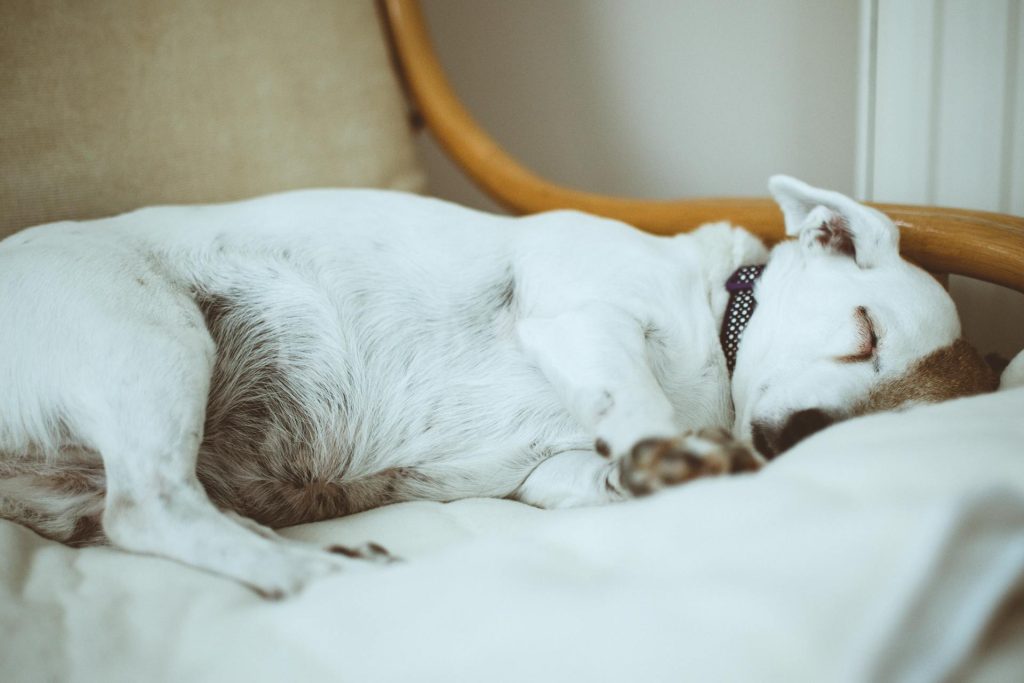
15 Expert Tips for Pet-Proofing Your Apartment Furniture (Stylishly)
Sharing a small space with pets means finding the perfect balance between function, comfort, and damage control. From couch cushions that collect fur to table legs turned chew toys, our furry friends can be tough on apartment furniture. But pet proofing your apartment furniture doesn’t have to mean sacrificing style—or your security deposit. With the right strategies, you can create a home that looks great, feels cozy, and holds up to zoomies, claws, and everything in between. These 15 expert-backed tips will help you protect your furniture (and your sanity) without compromising the design you love.
1. Choose Performance Fabrics That Repel Fur and Claws
If you’re buying or replacing furniture, start with pet-friendly fabric. Performance fabrics—like microfiber, tightly woven polyester, or even leather alternatives—are naturally resistant to claw snags, fur buildup, and stains. Look for terms like “stain-resistant,” “tight weave,” or “easy clean” in product descriptions.
Avoid tweed, boucle, velvet, or anything with open texture, which can trap fur or tempt scratching. A smooth surface not only looks sleek—it’s much easier to maintain in pet households.
2. Use Throw Blankets as Stylish Shields
Throw blankets are more than just cozy accents—they’re an excellent way to protect your couch or chairs from hair, drool, or muddy paws. Choose machine-washable throws in colors or textures that complement your decor, and layer them on pet hotspots like cushions or armrests.
Switch them out weekly to keep things fresh. This simple tactic helps extend the life of your furniture without hiding it under ugly covers—and your pet will love the soft spot, too.
3. Add Deterrents to Table and Chair Legs
Dogs love to chew and cats love to scratch—and unfortunately, furniture legs are prime real estate. To stop this before it starts, apply pet-safe bitter spray, adhesive guards, or clear vinyl wraps around chair, table, or bed legs.
You can also try wrapping sisal rope or placing a scratching post nearby to redirect the behavior. According to the AAHA, pets naturally seek out textured surfaces—so giving them a better option helps protect your furniture while still meeting their instincts.
4. Try Furniture Covers That Actually Look Good
Forget the baggy, outdated slipcovers of the past. Today’s pet-proof furniture covers are sleek, tailored, and designed with aesthetics in mind. Look for quilted or stretch-fit covers in neutral tones that match your decor. Many now come with non-slip backings and are machine washable.
These are especially helpful if you’re working with hand-me-down or older pieces, as they give your furniture a facelift while protecting against fur, scratches, and stains. Bonus: they make seasonal design swaps super easy.
5. Anchor Lightweight Furniture to Prevent Tip-Overs
In apartments where space is tight, small tables, shelves, or floor lamps can easily tip over during play or zoomies. Use tension rods, Velcro straps, or removable wall anchors to stabilize wobbly items—especially if you live with an energetic dog or a curious climbing cat.
The goal isn’t just to prevent damage to the furniture—it’s to protect your pet and your walls, too. According to Woodlawn Veterinary Hospital, toppling furniture can cause injuries in small pets or kittens that like to leap without thinking.
6. Keep Scratching Posts Near Furniture They Target
If your cat keeps going for the arm of the couch, don’t just scold them—give them an alternative right next to it. Place a vertical scratching post beside the area your cat targets most. Look for posts that match the height and texture they seem to enjoy.
You can even rub catnip or attach dangling toys to make the post more appealing. Over time, this redirection teaches them to scratch where it’s allowed, while sparing your furniture. And with so many modern designs available, a scratching post doesn’t have to be an eyesore.
7. Use Renter-Safe Barriers to Limit Access
If there’s a particular piece of furniture that’s constantly at risk—like a velvet accent chair or a vintage ottoman—sometimes the best solution is to block access altogether. Try tension-mounted baby gates, folding room dividers, or temporary pet fences that don’t require drilling or hardware.
This approach is especially helpful while training a new puppy or rescuing a cat with a chewing habit. Think of it as a stylish compromise—not total pet exile, just selective boundaries.
8. Choose Elevated Beds and Sofas with Hidden Storage
Furniture that sits directly on the floor tends to trap fur, crumbs, and toys underneath. Choosing elevated options with visible legs makes cleaning underneath easier and gives your apartment a lighter, airier feel. Even better? Look for beds or benches with built-in storage to hide pet gear like toys or lint rollers.
Bonus: Some pets love having a cozy hideaway underneath furniture—just make sure it’s safe, free of cords, and cleaned regularly to avoid odor buildup.
9. Keep Lint Rollers and Pet Hair Tools Handy
Prevention is great—but maintenance is key. Keep a stash of lint rollers, rubber brushes, or vacuum attachments in a nearby drawer or storage bin so you can tackle fur buildup before it becomes visible. Daily touch-ups take just a minute and go a long way in making your apartment look and feel cleaner.
Having tools within arm’s reach also means you’re more likely to use them. No more putting off fur cleanup until guests are on their way—just a quick swipe and done.
10. Try Furniture Sprays That Deter Chewing and Scratching
Not all pets are content to be redirected. If chewing or scratching persists, try a safe deterrent spray specifically designed for furniture. Bitter apple, citrus-based, or herbal blends are harmless to pets but unpleasant enough to discourage repeat damage.
Test on a small patch of fabric first, and always reapply according to the instructions. Many pet parents find that consistent use for just a couple weeks can help break the habit entirely—without yelling, punishment, or expensive damage.
11. Designate a Pet Zone (and Make It Appealing)
Pets often target furniture because they don’t have a space that feels like their own. A dedicated pet zone—whether it’s a soft corner in the living room, a crate with a view, or a window perch—can reduce attention-seeking behaviors like scratching or climbing on the couch.
Fill the area with cozy textures, familiar scents, and a few favorite toys. Once your pet has a space they love, they’re far less likely to test boundaries with your furniture.
12. Rotate Cushions and Flip Rugs Regularly
One way to extend the life of your furniture? Don’t let the same spot take all the wear and tear. Rotate your couch cushions weekly, and flip small rugs or washable floor mats every few days. This keeps fur from becoming embedded in just one area and prevents uneven fading or staining.
It also gives you a built-in chance to vacuum beneath each surface—an essential routine when living with pets in a compact space.
13. Keep Cords, Chargers, and Remotes Out of Reach
Furniture isn’t the only thing pets target—cords and remotes often become chew toys when left within easy reach. Use furniture anchors, under-desk cable sleeves, or zip ties to tuck cords behind sofas and entertainment centers. Keep chargers unplugged and stored in drawers when not in use.
For pets with a serious chewing habit, bitter sprays or protective tubing can also help. This small habit not only protects your electronics—but keeps your pets safe from electric shock or plastic ingestion.
14. Clean Up Accidents Quickly to Prevent Furniture Stains
Whether it’s a potty accident, vomit, or muddy paw prints, quick cleanup is key to preventing long-term stains or odors. Use a pet-safe enzyme cleaner and blot (don’t rub) to avoid pushing stains deeper into the fabric.
Keep paper towels and stain remover accessible so you’re not scrambling when a mess happens. The faster you act, the less likely it is to leave a mark—or a scent that keeps drawing your pet back to the same spot.
15. Accept Some Fur—and Celebrate a Pet-Friendly Home
No matter how diligent you are, living with pets means accepting a little fur, a few scratches, and the occasional muddy paw print. The goal isn’t perfection—it’s creating a space that works for both you and your furry roommates.
When your apartment reflects the joy and love pets bring into your life, a little mess here and there feels totally worth it. So keep it stylish, keep it clean, but also keep it real. You’re doing great.
Final Thoughts
Pet proofing your apartment furniture doesn’t have to mean covering everything in plastic or giving up on good design. With a few smart swaps, renter-friendly tools, and a little daily upkeep, you can protect your space while still making it feel like home—for both you and your pets. Try one or two tips at a time, build them into your routine, and enjoy the peace of mind that comes from knowing your furniture (and your furry best friend) are both well taken care of.
Frequently Asked Questions
What is the best furniture fabric for homes with pets?
Microfiber, synthetic suede, leather, and performance-treated fabrics are all great choices. They resist stains, repel fur, and are harder for claws to damage. Avoid loose-weave or textured materials like tweed or chenille that trap hair and are easy to snag.
How do I stop my cat from scratching the sides of the couch?
Place a tall scratching post directly beside the area they scratch. Cover the couch sides with double-sided tape or use a clear furniture shield. Rub catnip on the scratching post to make it more appealing. Over time, this redirection helps form new habits.
Are furniture sprays safe to use around pets?
Most sprays marketed for pet deterrence are safe, but always check the ingredients. Avoid sprays with alcohol or strong essential oils. Look for bitter apple, citrus, or vinegar-based formulas, and test on a small section of your furniture first.
Can I pet-proof my apartment without damaging the walls?
Yes! Use tension-mounted baby gates, command hooks, removable Velcro strips, and adhesive furniture bumpers to avoid nails or screws. Many products are renter-safe and designed to be removed cleanly when you move out.
What’s the easiest way to keep furniture fur-free?
Use machine-washable throws on high-traffic areas and keep a lint roller or rubber pet brush handy. Brushing your pet regularly also reduces how much fur ends up on your furniture in the first place.

Join the Busy Pet Parent Newsletter!
Get easy routines, time-saving tips, and the latest gear reviews—delivered straight to your inbox.
Perfect for busy pet owners, apartment dwellers, and anyone who wants a happy, healthy companion (without the stress).
Exclusive guides & checklists
Product recommendations & deals
No spam—unsubscribe anytime!




